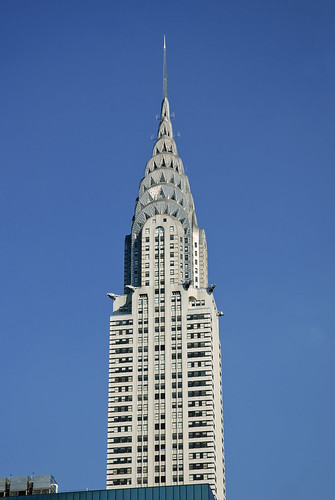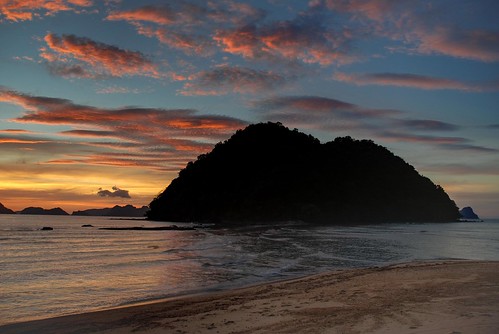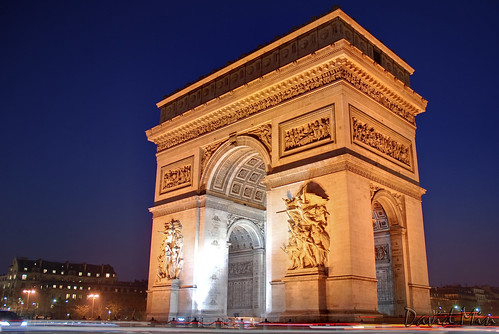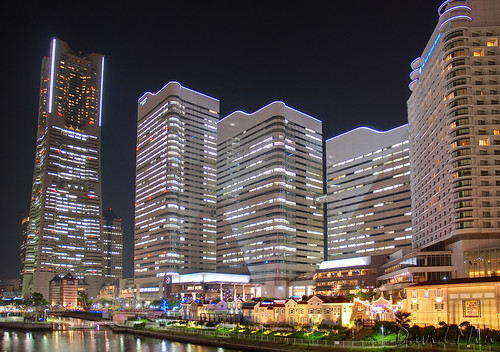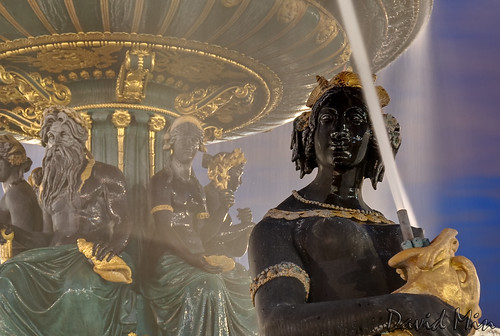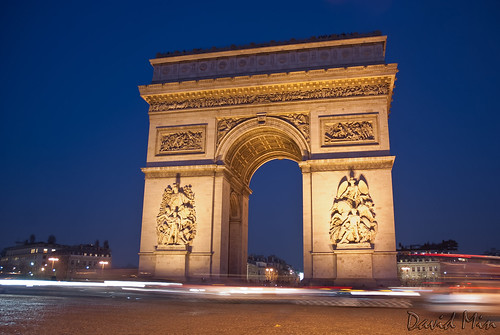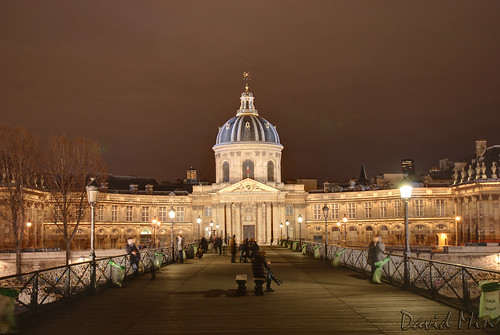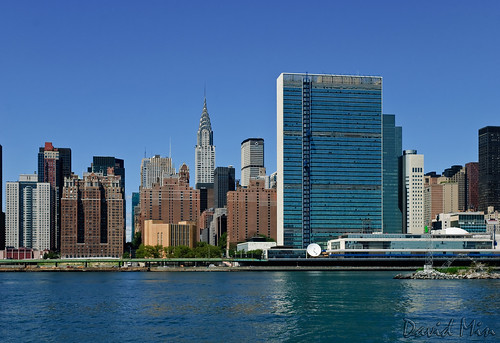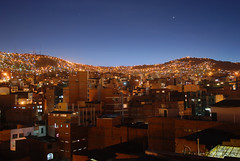The Chrysler Building is an Art Deco skyscraper in New York City, located on the east side of Manhattan in the Turtle Bay area at the intersection of 42nd Street and Lexington Avenue. Standing at 319 metres (1,047 ft), it was the world's tallest building for 11 months before it was surpassed by the Empire State Building in 1931. After the destruction of the World Trade Center, it was again the second-tallest building in New York City until December 2007, when the spire was raised on the 365.8-metre Bank of America Tower, pushing the Chrysler Building into third position. In addition, The New York Times Building which opened in 2007, is exactly level with the Chrysler Building in height.
The Chrysler Building is a classic example of Art Deco architecture and considered by many contemporary architects to be one of the finest buildings in New York City. In 2007, it was ranked ninth on the List of America's Favorite Architecture by the American Institute of Architects. It was the headquarters of the Chrysler Corporation from 1930 until the mid 1950's, but although the building was built and designed specifically for the car manufacturer, the corporation didn't pay for the construction of it and never owned it, as Walter P. Chrysler decided to pay for it himself, in order for his children to inherit it.
Monday, March 28, 2011
NYC - Chrysler Building
Sunday, March 27, 2011
Palawan, Philippines - Bacuit Archipelago
Monday, March 21, 2011
Paris, France - The Arc de Triomphe
The Arc de Triomphe, is one of the most famous monuments in Paris. It stands in the centre of the Place Charles de Gaulle, at the western end of the Champs-Élysées. There is a smaller arch, the Arc de Triomphe du Carrousel, which stands west of the Louvre. The Arc de Triomphe, honors those who fought and died for France in the French Revolutionary and the Napoleonic Wars, with the names of all French victories and generals inscribed on its inner and outer surfaces. Underneath its vault lies the Tomb of the Unknown Soldier from World War I.
The Arc de Triomphe is the linchpin of the historic axis — a sequence of monuments and grand thoroughfares on a route which goes from the courtyard of the Louvre, to the Grande Arche de la Défense. The monument was designed by Jean Chalgrin in 1806, and its iconographic program pitted heroically nude French youths against bearded Germanic warriors in chain mail. It set the tone for public monuments, with triumphant patriotic messages, until World War I.
Sunday, March 20, 2011
Boracay Island, Philippines - Stormy day @White Beach
Boracay is a tropical island about an hour's flight from Manila in the Philippines. Its long white sand beaches rival the best beaches of more popular destinations such as the Caribbean, the South Pacific as well as neighbouring Thailand, Malaysia and Indonesia.
Facilities are available to suit different levels of activity. For those wanting to just lounge around and take in some rays, beach-front hotels usually have lounge chairs set up just a few steps away from the hotel entrances.
Facilities for the usual water sports activities such as sailing, wind surfing, snorkeling, diving and jet skiing are also widely available for those in search of more active pursuits. The fun in Boracay also doesn't end when the sun sets. Boracay nightlife is pulsating with many bars and restaurants serving food, drink and fun until the very late evening.
Saturday, March 19, 2011
Yokohama, Japan - Minato Mirai 21 harbourside
Yokohama is the capital city of Kanagawa Prefecture and the second largest city in Japan by population after Tokyo and most populous municipality of Japan.
It lies on Tokyo Bay, south of Tokyo, in the Kantō region of the main island of Honshū. It is a major commercial hub of the Greater Tokyo Area. Yokohama's population of 3.6 million makes it Japan's largest incorporated city.
Yokohama developed rapidly as Japan's prominent port city following the end of Japan's relative isolation in the mid-19th century, and is today one of its major ports along with Kobe, Osaka, Nagoya, Hakata, Tokyo, and Chiba.
There are various points of interest in the futuristic Minato Mirai 21 harbourside redevelopment. The highlights are the Landmark Tower which is the tallest building in Japan, Queen's Square Yokohama (a shopping mall) and the Cosmo Clock 21, which was the tallest Ferris wheel in the world when it was built in 1989 and which also doubles as "the world's biggest clock".
My heart thoughts and prayers go out to everyone in Japan
Wednesday, March 16, 2011
Paris, France - Fountains on the Place de la Concorde
The city of Paris has some of the world's most beautiful fountains. One of the prettiest fountains can be found near the Obelisque at the Place de la Concorde.
The two fountains in the Place de la Concorde have been the most famous of the fountains built during the time of Louis-Philippe, and came to symbolize the fountains in Paris. They were designed by Jacques-Ignace Hittorff, a student of the Neoclassical designer Charles Percier at the Ecole des Beaux-Arts. The German-born Hittorff had served as the official Architect of Festivals and Ceremonies for the deposed King, and had spent two years studying the architecture and fountains of Italy.
Hittorff's two fountains were on the theme of rivers and seas, in part because of their proximity to the Ministry of Navy on the Place de la Concorde, and to the Seine. Their arrangement, on a north-south axis aligned with the obelisk of Luxor, and the Rue Royale, and the form of the fountains themselves, were influenced by the fountains of Rome, particularly Piazza Navona and the Piazza San Pietro, both of which had obelisks aligned with fountains.
Tuesday, March 15, 2011
Philippines - Rock formation @Cadlao Lagoon
El Nido is known as the Jewel of Philippine tourism. It is the perfect island destination for naturalists and ecotourists.
It houses one of Palawan's greatest natural treasures: the Bacuit Archipelago.
The Bacuit Archipelago is like Vietnam's Ha Long Bay and the Phi Phi area of southern Thailand, only more beautiful and astonishing. You can explore the bay on a local banca and discover the stunning lagoons and white sand beaches. The place is so romantic that it has inspired a number of impromptu and atypical weddings and the big lagoon has always been the favourite place.
The towering limestone karst cliffs, unique in this town, rank El Nido as anyone's dream. With its limestone cliff scenery, it makes you wonder how such a magical place exists in such a small town. The view from the town's foreshore is simply breathtaking.
Cadlao Island is known locally as “mini Tahiti” and rightfully so. Located at the southwest of the island, about a 25-minute boat ride from the town proper, Cadlao is known for its white-sand beaches, hidden lagoons and lush forest cover. Cadlao beach boasts of fine, creamy white sand, a gradually sloping sea floor, and crystal clear waters. It’s perfect for snorkeling, swimming, and just for wading in. As a bonus, the island is also home to Cadlao Lagoon and its beautiful rock formations. Before entering the lagoon you are greeted by a garden of corals teeming with schools of small colorful fish. The area is good for snorkeling. Of all the islands in El Nido, Cadlao has the highest limestone peak at 609 meters above sea level, with a land area of 1,006 hectares.
Monday, March 14, 2011
Paris, France - Ile de la Cité
The Île de la Cité is one of two natural islands in the Seine within the city of Paris (the other being the Île Saint-Louis). It is the centre of Paris and the location where the medieval city was refounded.
The western end has held a palace since Merovingian times, and its eastern end since the same period has been consecrated to religion, especially after the 10th century construction of a cathedral preceding today's Notre Dame.
The land between the two was, until the 1850s, largely residential and commercial, but since has been filled by the city's Prefecture de Police, Palais de Justice, Hôtel-Dieu hospital and Tribunal de Commerce. Only the westernmost and northeastern extremities of the island remain residential today, and the latter preserves some vestiges of its 16th century canon's houses.
Sunday, March 13, 2011
Philippines - Cadlao Lagoon
El Nido is known as the Jewel of Philippine tourism. It is the perfect island destination for naturalists and ecotourists.
It houses one of Palawan's greatest natural treasures: the Bacuit Archipelago.
The Bacuit Archipelago is like Vietnam's Ha Long Bay and the Phi Phi area of southern Thailand, only more beautiful and astonishing. You can explore the bay on a local banca and discover the stunning lagoons and white sand beaches. The place is so romantic that it has inspired a number of impromptu and atypical weddings and the big lagoon has always been the favourite place.
The towering limestone karst cliffs, unique in this town, rank El Nido as anyone's dream. With its limestone cliff scenery, it makes you wonder how such a magical place exists in such a small town. The view from the town's foreshore is simply breathtaking.
Cadlao Island is known locally as “mini Tahiti” and rightfully so. Located at the southwest of the island, about a 25-minute boat ride from the town proper, Cadlao is known for its white-sand beaches, hidden lagoons and lush forest cover. Cadlao beach boasts of fine, creamy white sand, a gradually sloping sea floor, and crystal clear waters. It’s perfect for snorkeling, swimming, and just for wading in. As a bonus, the island is also home to Cadlao Lagoon and its beautiful rock formations. Before entering the lagoon you are greeted by a garden of corals teeming with schools of small colorful fish. The area is good for snorkeling. Of all the islands in El Nido, Cadlao has the highest limestone peak at 609 meters above sea level, with a land area of 1,006 hectares.
Saturday, March 12, 2011
Paris, France - The Arc de Triomphe
The Arc de Triomphe, is one of the most famous monuments in Paris. It stands in the centre of the Place Charles de Gaulle, at the western end of the Champs-Élysées. There is a smaller arch, the Arc de Triomphe du Carrousel, which stands west of the Louvre. The Arc de Triomphe, honors those who fought and died for France in the French Revolutionary and the Napoleonic Wars, with the names of all French victories and generals inscribed on its inner and outer surfaces. Underneath its vault lies the Tomb of the Unknown Soldier from World War I.
The Arc de Triomphe is the linchpin of the historic axis — a sequence of monuments and grand thoroughfares on a route which goes from the courtyard of the Louvre, to the Grande Arche de la Défense. The monument was designed by Jean Chalgrin in 1806, and its iconographic program pitted heroically nude French youths against bearded Germanic warriors in chain mail. It set the tone for public monuments, with triumphant patriotic messages, until World War I.
Friday, March 11, 2011
Paris, France - A cold night @Pont des Arts
The Pont des Arts or Passerelle des Arts is a pedestrian bridge in Paris which crosses the Seine River. It links the Institut de France and the central square (cour carrée) of the palais du Louvre.
Between 1802 and 1804, a nine-arch metallic bridge for pedestrians was constructed at the location of the present day Pont des Arts: this was the first metal bridge in Paris. This innovation was due to Napoléon I, following a design of English manufacture.
The bridge has sometimes served as a place for art exhibitions, and is today a studio en plein air for painters, artists and photographers who are drawn to its unique point of view. The Pont des Arts is also frequently a spot for picnics during the summer.
Nowadays the bridge has become a hotspot for couples who attach a padlock to the railing and throw the key into the river below.
Wednesday, March 9, 2011
NYC, USA - United Nations Headquarters
The United Nations Organization (UNO) or simply the United Nations (UN) is an international organization whose stated aims are facilitating cooperation in international law, international security, economic development, social progress, human rights, and achievement of world peace. The UN was founded in 1945 after World War II to replace the League of Nations, to stop wars between countries, and to provide a platform for dialogue. It contains multiple subsidiary organizations to carry out its missions.
The headquarters of the United Nations is a distinctive complex in New York City, United States, that has served as the official headquarters of the United Nations since its completion in 1952. It is located in the Turtle Bay neighborhood of Manhattan, on spacious grounds overlooking the East River. Its borders are First Avenue on the west, East 42nd Street to the south, East 48th Street on the north and the East River to the east.Turtle Bay is used as a synonym for the U.N. headquarters or for the U.N. as a whole.
Though it is in New York City, and part of the United States, the land used by the United Nations Headquarters is considered international territory, while also being subject to most local, state, and federal laws. For award purposes Amateur radio operators consider it a separate "entity", and for communications the UN has its own internationally recognized ITU prefix, 4U.
Sunday, March 6, 2011
La Paz, Bolivia - Above the roofs
La Paz is an important cultural center of Bolivia. The city hosts several cathedrals belonging to the colonial times, such as the San Francisco Cathedral and the Metropolitan Cathedral, this last one located on Murillo Square, which is also home of the political and administrative power of the country. Hundreds of different museums can be found across the city, the most notable ones on Jaén Street, which street design has been preserved from the Spanish days and is home of 10 different museums.
Saturday, March 5, 2011
Batad, Philippines - Rice Terraces
Rice terraces are common throughout Asia but nowhere are they as spectacular as in the rugged mountains of northern Luzon. The Ifugaos have resisted integration into mainstream society and still practice their traditional farming and religion although headhunting is on the wane.
Batad is a place to reflect, gaze, wonder at the beauty of it all and bask in the pleasure of having such a place on this earth. A tour of the mountainous region of Northern Luzon is not complete without a visit there.
The Batad Rice Terraces are 2000-year old terraces that were carved into the mountains of Ifugao in the Philippines by ancestors of the indigenous people. The Rice Terraces are commonly referred to by Filipinos as the "Eighth Wonder of the World". It is commonly thought that the terraces were built with minimal equipment, largely by hand. The terraces are located approximately 1500 meters above sea level and cover 10,360 square kilometers of mountainside. They are fed by an ancient irrigation system from the rainforests above the terraces. It is said that if the steps are put end to end it would encircle half the globe.
The Batad Rice Terraces are inscribed as a UNESCO World Heritage Site. Locals to this day still plant rice and vegetables on the terraces, although more and more younger Ifugaos do not find farming appealing, often opting for the more lucrative hospitality industry generated by the Rice Terraces. The result is the gradual erosion of the characteristic "steps", which need constant reconstruction and care.
